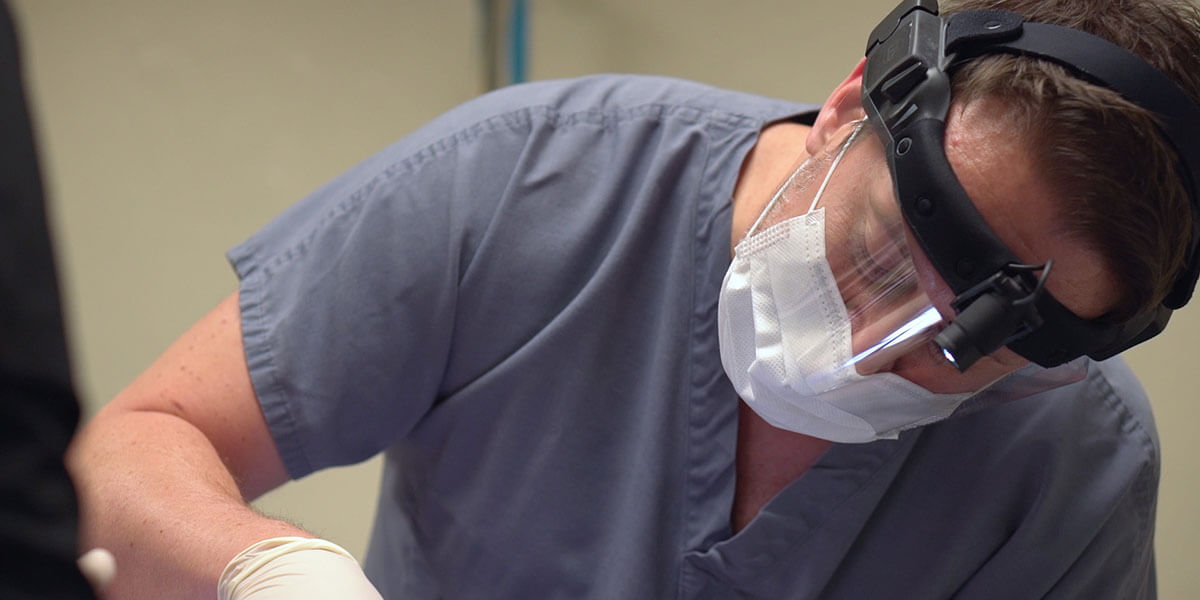Sinus Lift

Oral and Maxillofacial Associates provides sinus lift services in Oklahoma City and the surrounding area.. Call us at one of our five locations in Edmond, Midwest City, Oklahoma City, Lakeside, and Norman to schedule your specialist consultation.
As dental implants become increasingly popular, our oral surgery practice is performing more sinus lifts. This procedure is sometimes known as a sinus augmentation.
By doing this, it allows us to prepare the upper jaw for the placement of implants. If you’ve been told that you need a sinus lift, here’s what you need to know.
Why Sinus Lifts Are Needed
A key factor in the success of dental implants is sufficient jawbone for support and stability. Without this, implants become loose, shift in the mouth, and fail. Many patients need supplementary procedures prior to receiving their implants in order to increase bone mass and sinus lifts are one of these treatments.
We turn to sinus lifts whenever the bone height in the upper jaw is not enough to successfully support dental implants in the molar or premolar section of the mouth or when the sinuses are too close to the jaw. When patients have been without teeth for a while, the bone in the jaw begins to deteriorate. This is because the roots of the teeth no longer provide the bone with stimulation, sending a signal to the body that bone to support the teeth is no longer needed. Advanced gum disease, too, can cause bone resorption, as deep pockets of bacteria between the teeth and gums begin to degrade the supporting tissue that surrounds teeth.
Other times, it’s simply a matter of genetics—you may be born with a maxillary sinus that is close to your upper jaw or your sinus may be particularly large, something that can also happen as you age.
What Happens During a Sinus Lift
Two things need to occur during a sinus lift: the sinus membrane needs to be moved up, and then bone grafting needs to be added in the new space we’ve created between the jaw and maxillary sinuses.
Prior to your sinus lift, you’ll need x-rays and sometimes a CT scan to give us detailed pictures of your facial structures so we can come up with a plan for surgery. If you decide to use your own bone for the graft, it will need to be harvested from your mouth, hip, or tibia. Other options include bone from a tissue bank or from a cow.
During the sinus lift, we will make an incision in the gums in the back of the mouth, then lift this gum tissue so we can work on the bone beneath. By opening the bone slightly, we can reach the sinus membrane and push it up. Then, the bone grafting material is placed in the space we’ve created between the sinus and the upper jaw. Stitches are used to close the incision.
Sinus Lift Aftercare
Once the surgery is complete, you’ll need to wait several months before getting your dental implants as the bone grafts begin to be incorporated into your own bone, forming a stable base of support. In the days and weeks after the surgery, you’re likely to have swelling and discomfort, but it is usually minimal and easily managed with medication. Using saline spray can help with nose and sinus inflammation. It’s important to try to avoid sneezing and not blow your nose forcefully during the time that your body is healing, as it can cause the bone grafting material to shift.
Call us today to schedule your appointment.

